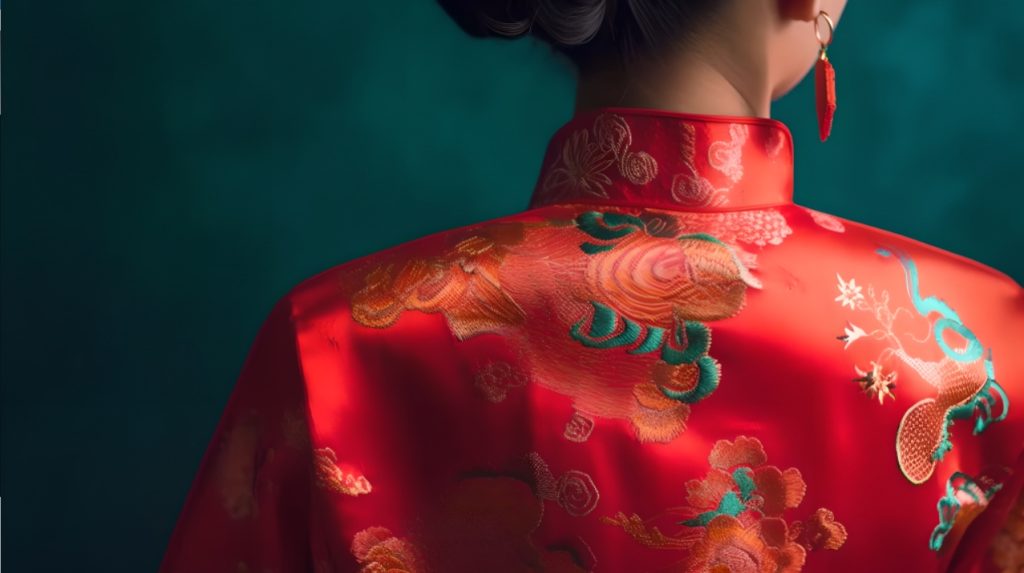
The Qipao, also known as Cheongsam in Cantonese, is one of the most iconic symbols of Chinese culture. Whether you’re traveling to China or simply fascinated by its fashion, understanding the significance of this traditional garment can enrich your experience. This guide will walk you through the history of Qipao, its cultural relevance, and practical tips on where to find your own while visiting China.
Table of Contents
The Historical Journey of Qipao
The Qipao’s story begins in the Qing Dynasty (1644–1912), where it was the everyday dress for Manchu women. At that time, the garment was loose-fitting, covering most of the body. It represented modesty and respect for tradition. As China evolved, so did its clothing. By the 1920s, with the emergence of Western influences in China’s cosmopolitan cities, particularly Shanghai, the Qipao transformed into a sleek, body-hugging garment that combined traditional and modern aesthetics.

Shanghai in the early 20th century was a melting pot of cultures, and it was during this time that the Qipao became a statement of elegance and sophistication. Worn by celebrities and socialites, the dress gained worldwide fame, immortalized by the “Shanghai calendar girls” and prominent Chinese actresses of the time.
Modern Qipao: A Blend of Tradition and Fashion
Today, Qipao is no longer just reserved for formal occasions. While the traditional elements like the high Mandarin collar and pankou (frog) buttons remain, modern designers have added a contemporary flair, making the dress more versatile for everyday wear. These modern iterations often feature zippers, lighter fabrics, and updated patterns that suit a variety of body types.

As a traveler, you’ll find these updated Qipaos available in most large cities. While the traditional silk Qipaos are still popular for weddings and Chinese New Year, you can also find cotton and linen versions that are perfect for casual outings.
Where to Find a Qipao in China
When it comes to shopping for Qipaos, Shanghai and Beijing are top destinations. Here are a few must-visit places for travelers:
- Shanghai’s Maoming Nan Lu: Known as the heart of bespoke tailoring in the city, this street is lined with Qipao boutiques where you can get custom-tailored pieces. Depending on the design and fabric, a handmade Qipao can cost anywhere from ¥3,000 to ¥10,000 (around $450 to $1,500 USD).
- Beijing’s Silk Street Market: A haven for tourists looking for affordable fashion, Silk Street offers a wide range of Qipao styles. While not custom-made, many shops offer basic alterations to ensure a better fit.
- Hong Kong’s Central District: For those traveling to Hong Kong, the city’s Central District is home to many high-end tailors who specialize in both traditional and modern Qipaos. Hong Kong played a key role in preserving Qipao craftsmanship, especially during the 1950s, when many Shanghainese tailors moved to the city.

How to Style Your Qipao
The Qipao is not just a garment; it’s a way to express both individuality and cultural pride. Here are some tips for wearing your Qipao like a local:
- For Weddings: Opt for red or gold Qipaos, as these colors symbolize prosperity and happiness in Chinese culture. These are often adorned with intricate embroidery, making them perfect for formal events.
- Casual Wear: Contemporary Qipaos made from cotton or linen can be worn as chic day dresses. Pair them with simple accessories like jade jewelry for an authentic look without being over-the-top.
- Business or Formal Events: If you’re attending a more formal function, choose a silk Qipao with minimal embroidery and a modern cut. These dresses often come in neutral colors, such as navy or black, making them suitable for formal dinners or business meetings.
The Cultural Significance of Qipao
For many Chinese people, the Qipao is more than just clothing—it’s a connection to their heritage. The dress embodies the virtues of modesty, grace, and elegance. Its high collar, which covers most of the neck, symbolizes respect and conservatism, while the dress’s tight silhouette highlights the wearer’s femininity. Wearing a Qipao as a traveler allows you to engage with Chinese culture in a meaningful and respectful way.

In some parts of China, you’ll see women still wearing Qipao on important holidays or for professional photoshoots. Traditional Qipaos are also passed down through generations as family heirlooms, especially those made with luxurious materials like brocade or embroidered silk.
When to Wear a Qipao as a Traveler
There are plenty of occasions where travelers can wear a Qipao:
- Cultural Festivals: Attending events like Chinese New Year or the Mid-Autumn Festival? A Qipao is the perfect outfit to blend into the celebrations and show your appreciation for Chinese culture.
- Photoshoots: Many tourists rent Qipaos for photoshoots at famous landmarks such as the Forbidden City in Beijing or Yu Garden in Shanghai. This adds an authentic cultural touch to your travel memories.
- Formal Dinners: If you’re invited to a formal Chinese banquet or a wedding during your stay, wearing a Qipao is both a respectful and stylish choice.

Conclusion: Why Every Traveler Should Experience Qipao
The Qipao, with its rich history and timeless style, offers travelers a unique way to connect with Chinese culture. Whether you choose to buy a custom-made dress in Shanghai or pick up a ready-to-wear piece in Beijing, the Qipao is more than a souvenir—it’s a piece of living history.
By understanding its cultural significance and knowing where to shop, you can bring home a Qipao that not only fits you but also tells a story of China’s elegant past and vibrant present. Next time you’re in China, why not make wearing a Qipao part of your journey?






